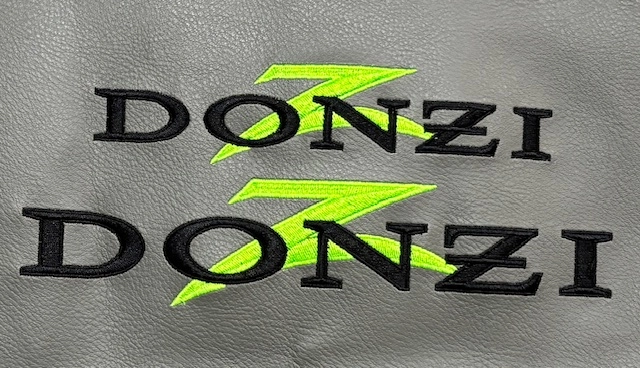Heat Transfer on T-Shirts and Aprons - Custom Styles and Logo Designs
Heat Transfer on T-Shirts and Aprons - Custom Styles and Logo Designs
Blog Article
The Art of Custom-made Needlework: Unlocking the Keys to Creating One-of-a-kind and Memorable Designs
The tricks to developing personalized needlework designs that mesmerize the eye and leave an enduring impression lie in a fragile equilibrium of strategy, creative thinking, and focus to information. As we dig right into the globe of custom needlework, we uncover the nuanced interplay between thread selection, stitch intricacy, and style personalization that raises a mere garment to a work of art.
Selecting the Right Embroidery Threads
When selecting needlework threads, what essential elements should you think about to guarantee the ideal results for your personalized designs? The selection of embroidery string is critical in determining the last end result of your stitched design.
Furthermore, the weight or density of the string plays a considerable function in the appearance of the embroidery. Thicker threads can add dimension and texture to your layout, while finer threads are optimal for complex details and tiny message. In addition, taking into consideration the shade fastness and washability of the string is vital to make certain that your personalized layouts preserve their top quality and vibrancy with time. By carefully reviewing these elements and choosing top quality strings that satisfy your details needs, you can boost the visual appeal and long life of your stitched productions.
Exploring Different Stitch Techniques
To explore the realm of 'Checking out Different Stitch Techniques', one must comprehend the ins and outs and subtleties that each stitching approach brings to the art of needlework. Different stitch strategies not only include aesthetic rate of interest but also add to the overall appearance and measurement of the style. One prominent stitch technique is the satin stitch, which entails carefully jam-packed parallel stitches to develop a smooth and glossy surface area, ideal for completing shapes and producing strong lays out.
On the various other hand, the backstitch is a functional method usually used for laying out and including great information. It entails sewing backward to produce a strong line of embroidery. In addition, the French knot stitch includes a responsive aspect to layouts, excellent for creating textured accents like blossom facilities or decorative touches.
Exploring different stitch strategies allows embroiderers to have fun with light, shadow, and deepness within their layouts, boosting the visual charm and imaginative top quality of their needlework tasks. By understanding numerous stitching methods, one can unlock unlimited possibilities for producing unique and remarkable custom-made embroidery pieces.
Incorporating Personalized Design Components
Having checked out the complexities of different stitch strategies such as the satin stitch, backstitch, and French knot, the focus now moves towards integrating individualized style elements in custom needlework projects. Individualized design components play an essential role in making embroidery projects absolutely special and unforgettable. One means to include personalization is by including initials, names, or considerable dates to the style. This not just adds a tailored touch yet additionally improves the nostalgic value of the embroidery piece.
Another way to include customized style components is by consisting of symbols or concepts that hold special significance to the recipient or reflect their passions and individuality. Incorporating a favorite blossom, pet, or hobby-related symbol can make the needlework style much more click over here now significant and personalized. Furthermore, choosing colors that resonate with the recipient or line up with the designated style can further boost the personalization of the embroidery project.
Understanding the Art of Shade Coordination

One key element of shade sychronisation is comprehending color concept. This includes recognizing how different shades engage with each other, the emotions read they share, and exactly how they can be integrated to create aesthetically attractive designs. By using shade theory concepts, embroiderers can create harmonious color combinations that enhance the general appearance of the layout.
Furthermore, paying attention to comparison is essential in color sychronisation. Making use of contrasting colors can aid specific components of the style pop, boost readability, and develop a visually dynamic embroidery piece. By mastering the art of shade sychronisation, embroiderers can boost their designs and develop memorable items that resonate with customers and audiences alike.
Enhancing Structure With Advanced Embroidery Stitches
French knots, for instance, are perfect for adding little, elevated dots to your design, mimicking the appearance of beads or producing a textured surface. Bullion knots, on the various other hand, can be made use of to develop twisted, ropelike aspects that add an elegant feeling Recommended Site to the needlework. Seed stitching includes tiny, scattered stitches that can load in locations with a speckled structure, while turkey job creates fluffy, dimensional accents similar to animal hair or vegetation. Explore these sophisticated embroidery stitches allows you to push the boundaries of traditional needlework and produce genuinely unique and visually attractive appearances in your layouts.
Conclusion
In conclusion, the art of custom embroidery includes a mix of picking the appropriate threads, checking out numerous stitch techniques, incorporating customized design components, understanding color coordination, and boosting texture with sophisticated stitches. By comprehending and carrying out these vital aspects, embroiderers can develop special and unforgettable layouts that display their creative thinking and ability. Embroidery fanatics can unlock the keys to developing stunning and bespoke items that stand out and leave a long-term perception.
Report this page